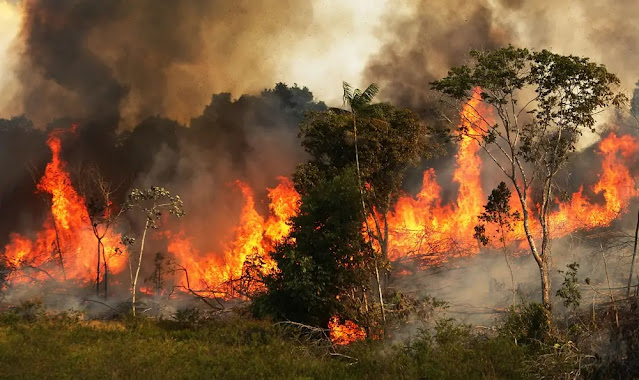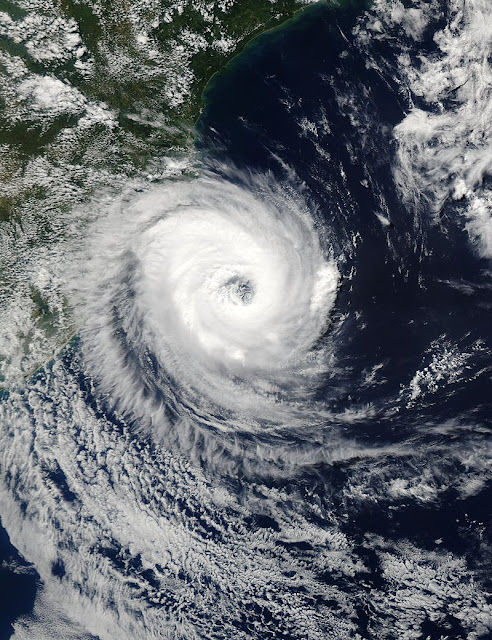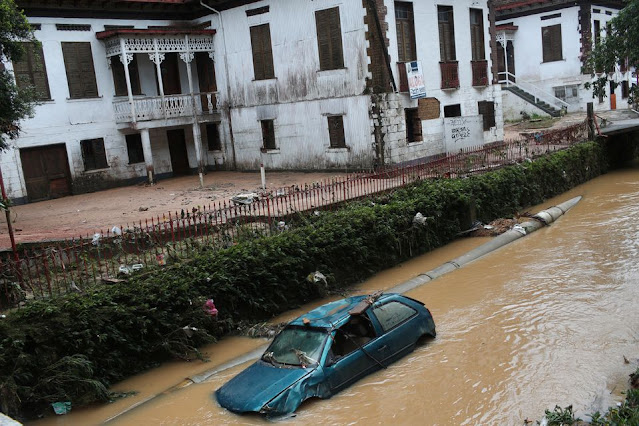There are a number of increasingly serious effects of global warming across the continent of South America right now, in addition to the trends which are almost certain to become more severe in years to come. As is usually the case, climatic effects are worsened by human activities which amplify and extend them. Prime examples of this are the forest fires which have blazed through the Amazon rainforest since 2019.
Amazon wildfire, 2019
Several ruinous trends have converged to form this crisis. First, and fundamentally, is the ongoing warming of the planet, which has raised temperatures in the air, ocean, and soil. While the increased heat has amplified the water cycle, leading to more rain in many places on earth, at the same time it has made weather patterns less predictable, leading to more droughts in those same areas, increasing the overall likelihood of forest fires. Second is the ongoing deforestation of the Amazon, which has been happening for decades, as Brazil increases its agriculture and industry. In many cases fires are set deliberately as the least expensive, most efficient method of clearing land.
Lake Poopo by satellite, 2004 (left) vs. 2016 (right)
Third, and most specifically, was the 2018 election of right-wing ideologue Jair Bolsonaro to the Brazilian presidency. He has pursued an outright murderous policy toward the Amazon and its inhabitants, encouraging increased burning and land clearing. He began firefighting efforts, reluctantly, only in September 2019 after months of increasing public pressure. A few short years later—2022--extreme amounts of rain swelled several rivers in Brazil and flooded several cities such as Jordao and Petropolis.
Lake Poopo, recently, up close
Water scarcity is becoming a reality throughout the continent, not only in Brazil, but elsewhere. In 2014 water reserves for São Paolo, the largest city in Brazil, dropped below 10%. Cities and towns in Peru and Colombia have also faced water shortages in recent years. And like the Aral Sea in Asia, Lake Poopo, formerly the second-largest lake in Bolivia, has gone dry. This is due partly to decreased rain, and partly to diversion of water for irrigation projects. Increased heat and decreased precipitation has forced the evacuation of several native tribes from the savannas of Guyana.
Hurricane Catarina, 2004, approcahing Brazil
The South Atlantic, not known for cyclones, is producing a growing number of tropical storms. Since 2004, when the first-ever recorded South Atlantic hurricane, Catarina, came ashore, several cyclones have formed there. Conditions in the South Atlantic are not conducive to hurricane formation. Due to large-scale circulation patterns, the surface water is generally cool, and the tropospheric wind shear—differences in velocity and direction with height—is high enough to prevent the strong vertical convection necessary for a large storm to form. But as the ocean and air continue to warm, conditions are increasingly ripe for more to do just that.
Petropolis, 2022
Tomorrow: introduction to Brazil.
Be brave, and be well.










No comments:
Post a Comment